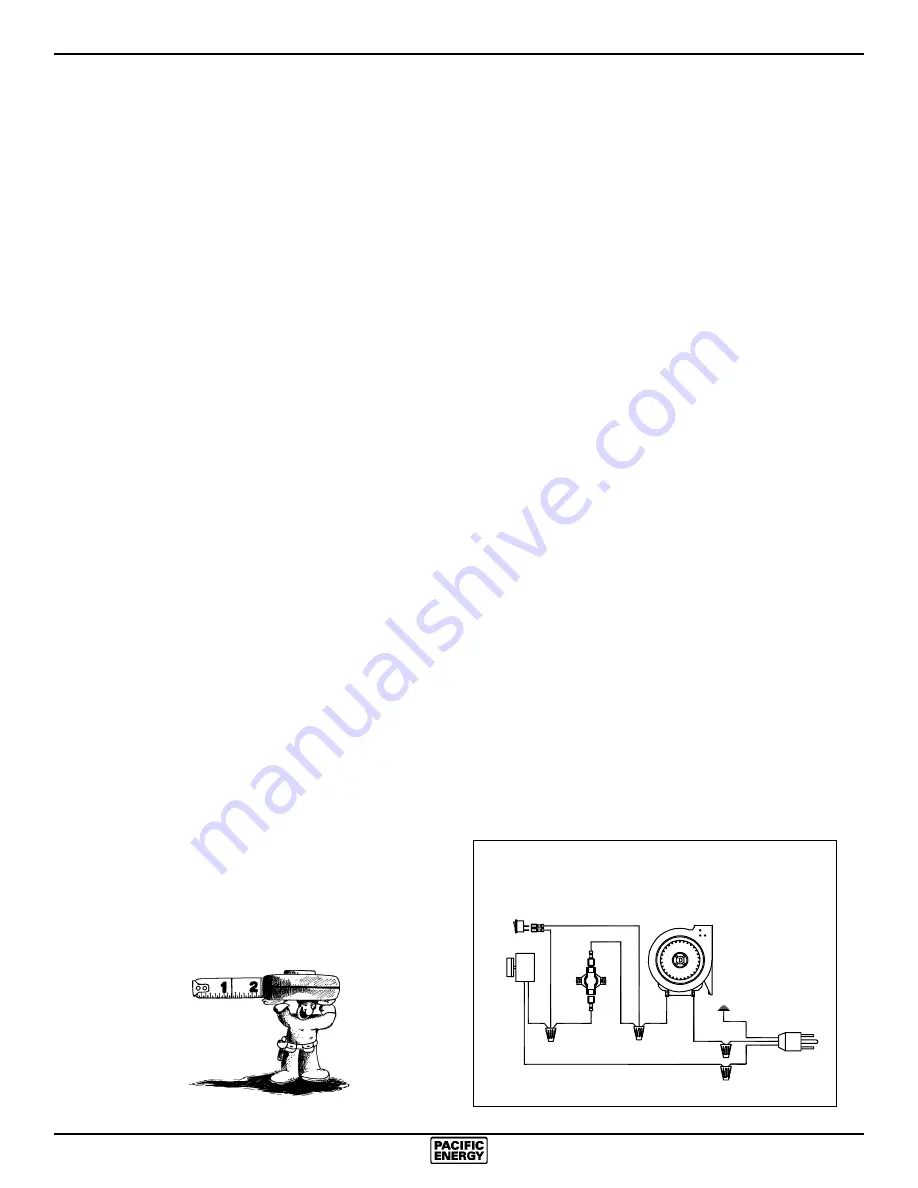
12
300309-20
Blower
The Pacific Insert comes equipped with a variable speed
circulating air blower. The blower system is thermostatically
controlled for automatic operation, as well manually with a
convenient bypass switch.
Blower Operation
Automatic:
To operate the blower automatically, push the
rocker switch to the “OFF” position and set the fan speed
control to a desired setting.
This will allow the blower to turn on automatically once the
Insert has come up to operating temperature. It will also shut
the blower off after the fire has gone out and the appliance
cooled to below a useful heat output range.
Manual:
To manually operate the blower, push the rocker
switch to the “ON” position and set the fan speed control to
a desired setting. This will bypass the temperature switch
and allow full control of the blower.
Suggested settings:
- Combustion air control setting of "L" (low), operate
blower speed control on “Low”.
- Combustion air control greater that "L" (low), operate
blower speed control at desired setting.
Electrical Supply
Circulating air blower electrical rating; 115V, 60 Hz, 80
Watts. For your protection against shock hazard, use only
a properly grounded outlet that will accept a three-pronged
plug. Do not cut or remove the grounding prong.
Consult local codes or in the absence of local codes, with
the current CSA C22.1 Canadian Electrical Code and in
the USA with the National Electrical Code, ANSI/NFPA 70
(latest edition).
Fig. # 17
L2 (black)
G (green)
L1 (white)
Speed
Control
Blower
Thermo
Switch
By-pass
Rocker Switch
Chimney Fires
The result of excessive creosote buildup is a chimney fire.
Chimney fires are dangerous. Chimney inside temperatures
can exceed 2000 degrees F. This causes much higher
than normal temperatures in the chimney and on its exterior
surfaces thus ignition of nearby or touching combustible
material is more likely during a chimney fire. Proper clear-
ances are critical during such a fire.
Chimney fires are easy to detect; they usually involve one
or more of the following:
- Flames and sparks shooting out of the top of the
chimney
- A roaring sound
- Vibration of the chimney
In Case of a Chimney Fire
1. Prepare to evacuate to ensure everyone’s safety. Have
a well understood plan of action for evacuation. Have
a place outside where everyone is to meet.
2. Close air inlets on stove.
3. Call local fire department. Have a fire extinguisher handy.
Contact your local fire authority for further information on
how to handle a chimney fire. It is most important that
you have a clearly understood plan on how to handle a
chimney fire.
4. After the chimney fire is out, the chimney must be
cleaned and checked for stress and cracking before
starting another fire. Also check combustibles around
chimney and the roof.
Avoiding a Chimney Fire
There are two ways to avoid chimney fires:
1. Do not let creosote build up to a point where a big
chimney fire is possible.
2. Do not have fires in the heater that may ignite chimney
fires. These are hot fires, such as when burning house-
hold trash, cardboard, Christmas tree limbs, or even
ordinary fuel wood; (eg. with a full load on a hot bed of
coals and with the air inlet wide open).
Summary of Contents for Pacific Wood Insert DESIGN-D
Page 17: ...17 300309 20 NOTES...
Page 18: ...18 300309 20 NOTES...
Page 19: ...19 300309 20 Label...






































